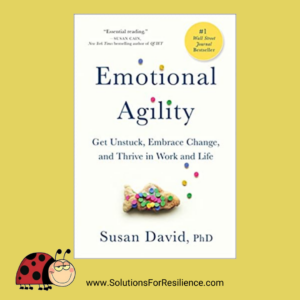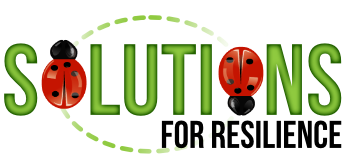Emotional Agility: Get unstuck, embrace . . . Book Summary
 Emotional Agility: Get unstuck, embrace change, and thrive in work and life, authored by Harvard Medical School psychologist, Susan David ranks high in my reading inventory. I place it with the likes of Daniel Goleman’s Emotional Intelligence: Why It Can Matter More than IQ and Brene’ Brown’s Atlas of the Heart: Mapping Meaningful Connection and the Language of Human Experience.
Emotional Agility: Get unstuck, embrace change, and thrive in work and life, authored by Harvard Medical School psychologist, Susan David ranks high in my reading inventory. I place it with the likes of Daniel Goleman’s Emotional Intelligence: Why It Can Matter More than IQ and Brene’ Brown’s Atlas of the Heart: Mapping Meaningful Connection and the Language of Human Experience.
Overview
Based on research and her own story of childhood poverty, David proposes that emotional rigidity is about better managing dysfunctional thoughts, feelings, and behaviors. Along with references to depression and anxiety, she offers strategies to strengthen our flexibility and resilience. Her message is about thriving in the face of challenges at work and home.
David’s goal is to strengthen our well-being and give us ways to succeed in our personal development and work-life. David is well recognized as a teacher and writer about the intersection between business and psychology. She makes a strong case for the internal work of studying our thought and emotions.
Susan David’s TEDWomen Talk
In David’s 2017, TEDWomen Talk: The Gift and Power of Emotional Courage she states, “You might think you’re in control of unwanted emotions when you ignore them, but in fact they control you. Internal pain always comes out. Always. And who pays the price? We do. Our children, our colleagues, our communities.”
Basic Concepts
- David cites Holocaust survivor, neurologist, and psychiatrist Viktor Frankl and his classic book, Man’s Search for Meaning. We can learn to create a space between how we feel and how we respond.
- We can also learn to detach and observe both our thoughts and emotions. We can become more mindful.
- Focusing on our values and knowing our why, helps us discipline our thoughts and urges, and become more comfortable with ourselves.
- Thoughts that are slower and more deliberate, develop flexible behaviors. So we are wise to slow down our thinking. Give pause.
- We can catch our internal chatterbox It might include blaming, monkey-mind (thought spinning), outgrown ideas, and unjust righteousness.
- Brooding and bottling our emotions is unhelpful. We can befriend, appreciate, and learn from our emotions, including anger.
- The simplified positivity movement of always be happy with a smile, can be detrimental to our well-being.
- Self-compassion is not about being selfish but about protecting our well-being.
- Making small shifts in our mindset and habits can make a significant difference.
- We can improve our decision-making processes.
- We can also strengthen our grit, courage, and resilience.
- We need to stop over-parenting and over-protecting our children. We would be wise to model a full range of emotions and allow our children to develop emotional agility.
15 Susan David Quotes:
- “Discomfort is the price of admission to a meaningful life.”
- “A growing body of research shows that emotional rigidity—getting hooked by thoughts, feelings, and behaviors that don’t serve us—is associated with a range of psychological ills, including depression and anxiety.”
- “Meanwhile, emotional agility—being flexible with your thoughts and feelings so that you can respond optimally to everyday situations—is key to well-being and success.”
- “Emotional agility means being aware and accepting of all your emotions, even learning from the most difficult ones. It also means getting beyond conditioned or preprogrammed cognitive and emotional responses (your hooks) to live in the moment with a clear reading of present circumstances, respond appropriately, and then act in alignment with your deepest values.”
- “Brooding and bottling aren’t the only unproductive ways people cope with life’s stresses. Another common strategy is the belief, in one form of another, that all will be well if we can just keep on smiling.”
- “There’s a misconception that you need to be tough on yourself to maintain your edge. But people who are more accepting of their own failure may actually be more motivated to improve.”
- “Learning to label emotions with a more nuanced vocabulary can be absolutely transformational. People, who can identify the full spectrum of emotions—who realize how, for example, sadness differs from boredom, or pity, or loneliness, or nervousness—do much, much better at managing the ups and downs of ordinary existence than those who see everything in black and white.”
- “Anytime you get hooked, identify that thought for what it is (a thought) and that emotion for what it is (an emotion). You can do this by introducing the language, ‘I’m having the thought that . . .’ or ‘I am having the emotion that . . .’”
- “Remember you have no obligation to accept your thoughts or emotions’ opinions.”
- “If you know your own personal values and generally live by them, you are also likely to be comfortable with who you are.”
- “People who have a growth mindset and who see themselves as agents in their own lives are more open to new experiences, more willing to take risks, more persistent, and more resilient in rebounding from failure.”
- “Managing social connection is vital to our survival because we still depend on family and tribe, friends and loved ones, for our well-being.”
- “Confusing safety with the familiar, the accessible, and the coherent, limits our options. To keep growing, you need to be open to the unfamiliar, even the uncomfortable.”
- “My own research has shown that pay is far from the only aspect of a job that provides satisfaction and incentive. (What does is) . . . a sense of connection with their teams, challenge in their work, being truly seen as individuals, and feeling empowered in their roles.”
- “The most effective way to teach your children emotional agility is by practicing it yourself.”
Please check out these related posts:
- Emotional Support: How to Give It in Times of Distress
- Feeling Words Describe our Emotions
- Crying at Work and What to Do About It




